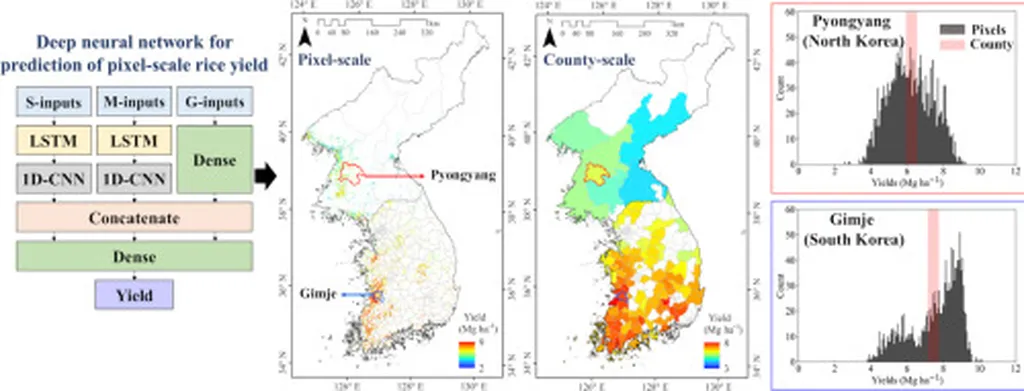In the heart of South Korea, a groundbreaking study led by Hyeok-Jin Bak at the National Institute of Crop and Food Science, part of the Rural Development Administration, is revolutionizing rice yield estimation. By harnessing the power of deep learning and high-resolution RGB imagery, Bak and his team have developed a novel framework that captures the dynamic changes in rice panicle coverage over time, offering unprecedented insights into crop development and yield prediction.
The study, published in the esteemed journal *Frontiers in Plant Science* (translated as “Plant Science Frontiers”), addresses a critical gap in current agricultural practices. “Most studies rely on single-time-point analyses, which fail to capture the dynamic changes in panicle coverage and their effects on yield,” explains Bak. His team’s approach integrates temporal data with advanced deep learning techniques to model the growth and decline dynamics of rice panicles, providing a more accurate and comprehensive understanding of crop performance.
The researchers evaluated five semantic segmentation models to delineate rice panicles effectively. DeepLabv3+ and LinkNet emerged as the top performers, achieving a mean Intersection over Union (mIoU) score of over 0.81. These models were used to extract time-series panicle coverage data, which were then fitted to a piecewise function. This process distilled key predictive parameters, including maximum panicle coverage (K), growth rate (g), time of maximum growth rate (d0), decline rate (a), and transition point (d1).
These parameters served as predictors in four machine learning regression models—Partial Least Squares Regression (PLSR), Random Forest Regression (RFR), Gradient Boosting Regression (GBR), and eXtreme Gradient Boosting Regression (XGBR). The RFR and XGBR models demonstrated the highest performance, with an R-squared value of 0.89, indicating a strong correlation between the predicted and actual yields.
The study’s findings have significant implications for precision agriculture and crop breeding. By quantifying rice developmental dynamics, this framework enables farmers and breeders to make data-driven decisions, optimizing resource allocation and improving crop yields. “This framework holds significant potential for advancing both precision agriculture and crop breeding efforts,” Bak emphasizes.
The commercial impacts of this research are substantial. In an era of climate change and rising global populations, the ability to accurately predict and optimize crop yields is more critical than ever. This technology can help farmers maximize their yields, reduce waste, and adapt to changing environmental conditions, ultimately contributing to food security and economic stability.
Moreover, the integration of deep learning and semantic segmentation in agricultural practices paves the way for future developments in the field. As Bak notes, “This is just the beginning. The potential applications of this technology are vast, and we are excited to explore them further.”
In conclusion, the study led by Hyeok-Jin Bak represents a significant advancement in agricultural technology. By leveraging deep learning and high-resolution imagery, this research offers a powerful tool for quantifying rice developmental dynamics and predicting yield with unprecedented accuracy. As the world faces increasing challenges in food production, this innovative approach holds promise for shaping the future of agriculture and ensuring food security for generations to come.

